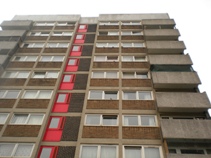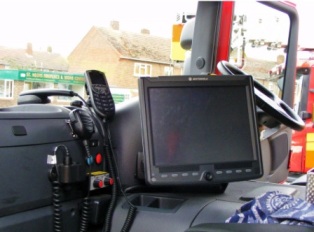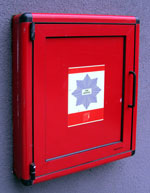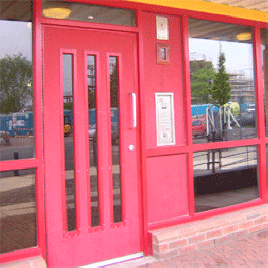Obtaining information about a potential risk, before it becomes a risk is a vital part of fire service operations. Legislation has been in place in the UK since the 1940's to enable FRS to enter buildings, familiarise themselves and obtain information prior to any incident. This is currently enshrined in Sect 7(2)d of the Fire and Rescue Services Act 2004
" .make arrangements for obtaining information needed for the purpose mentioned in subsection (1)" (sic: Fire fighting and rescue)
With this comes certain statutory powers (including the right of entry) to obtain such information
Sect 45 (1) a
"An authorised officer may at any reasonable time enter premises....
the purpose of obtaining information needed for the discharge of a fire and rescue authority’s fu
With this comes the requirement to gather the correct and appropriate information to help inform risk assessment and tactics. This is often called Site Specific Risk Information (SSRI). Information gathering should be carried out by local crews with suitable skills, assisted by technical fire safety officers and building owners/managers. Most UK FRS have a pre agreed system and structure for this process. This information must to be readily available to any oncoming crews and should be laid out in a prioritised fashion, with HAZZARDS, DO's and DON'TS at the start.
By their very nature it is suggested that most high rise buildings will require some form of SSRI to be gathered and made available. It must be remembered that this information may highlight things that are tactically advantageous to fire crews when attending an incident. (ventilation systems, suppression etc..) as well as identifying risks. Also SSRI information provides a useful basis for training and tactical discussion prior to any incident happening.
At its simplest level SSRI need to identify hazards that they would not normally expect in a high rise building. Good training should make first attending crews familiar with the generic hazards these buildings could present. An understanding of the design measures these buildings could contain will also be beneficial (compartmentation, fixed installations, risers..etc).
Where there is a deviation of these 'norms' a thorough review should take place to try to assess any impact it may have during an incident. Often the Information gathering exercises will highlights problems or issues that can be addressed through training, legislation or a better understanding by the owners/occupiers.
Three stages of creating Risk Information.
1. Risk identification and Information gathering
2. Development of the Risk information document
3 Tactical guide (with validation)
Risk identification and Information gathering.
All information gathered should be recorded and ideally supplemented by plans and photographs.
In the early stages a review of the statistical data available to the relevant FRS should be made, to give some incident history to any given building. This can be useful to help assess probability, though this may be difficult in new developments and the past is not always a true indicator of the future.
EXTERNAL
Take time to look at the full external structure and design of the building. The building will need a full 360 degree survey. From this ascertain all entry and exit points. look above them and assess there vulnerability to incidents in certain parts of the building and the effect of falling debris. Ascertain the materials used in the construction of window frames and any balcony patio doors. Look for ventilation systems (louvered windows and panels) and any obvious paths for external fire spread |
 |
Look for suitable locations for the first attending appliances and the best locations for Height Vehicles (HV). The pitching of height vehicle and its working ranges should be accurately reviewed in conjunction with a qualified HV Commander. It is crucial that the best HV locations are identified and kept clear by all attending crews. The area below a high rise building should not be congested with pumping appliances. A suitable rendezvous point (RVP) must be pre identified ready for large scale incidents.
Provision of good water supplies at high rise incidents is of utmost importance. A suitable primary hydrant must be located. Under building regulations in the UK there should be one within 18M of any riser inlet. Secondary hydrants should be identified (ideally from separate mains). All hydrants identified for use should be accurately flow tested.
Communial Entrance (With Firefighter Over-ride switches) |
The external security of the building should be reviewed with reference to providing immediate access to the internal building to Fire fighting crews as soon as they attend. In any building with 24hr site staff or a concierge (predominately commercial buildings and hotels) providing access to fire crews should be a priority. If the entrances are secure and unattended an agreed method of immediate access for fire crews should be sought. |
INTERNAL
Internal assessment should be carried out by a local crew with a view to creating an SSRI document and tactical guide for the building. This crew needs to have a good understanding of what they are looking at together with an understanding of the owners risk assessment and control measures, which will be a requirement in the UK under the RRO (Regulatory Reform Order-Fire Safety 2005).
The building manager/ responsible person will be invaluable during the assessment as they should have a full understanding of the building and its systems. They will also have assess to, and an understanding of, any Fire risk assessments previously carried out. In high rise buildings it will always be beneficial to have the assistance of a local technical fire safety officer. His expertise will help local crews understand the tactical implications of any Fire Safety measure the building possesses (especially any 'approved engineered solutions') and in the UK, interpreting the application of the RRO. |
On scene Information availibility
 |
 |
|
| Apliance based Mobile Data Terminal
Photo: James Morris (Flickr) |
Gerda Premise Information Box Photo: www.gerdasecurity.co.uk |
actions under section 7, 8 or 9,"
 This link will take you away from www.highrisefire.co.uk Please be aware that we do not necessarily endorse or support the views, opinions and expressions of this site !
This link will take you away from www.highrisefire.co.uk Please be aware that we do not necessarily endorse or support the views, opinions and expressions of this site !

